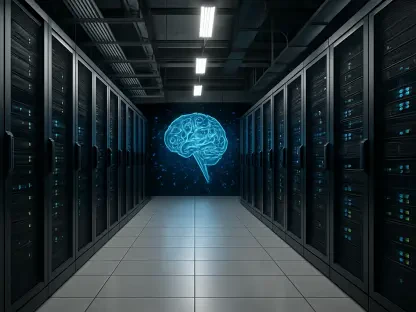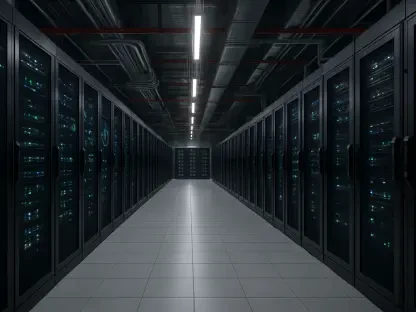The evolution of public compute clouds has been marked by a significant transformation from CPU-dominated architectures to a diverse mix including GPUs and Data Processing Units (DPUs). While GPUs have garnered much attention for their role in advancing artificial intelligence, DPUs are equally crucial in redefining how applications are delivered and how network functions are designed. This architectural shift necessitates closer collaboration between application development (AppDev) and network operations (NetOps) teams to maximize the efficiency and performance of cloud environments.
The Role of DPUs in Modern Cloud Environments
DPUs play a pivotal role in modern cloud environments by offloading network, security, and data processing tasks from traditional processors, thereby transforming the interaction between applications and network infrastructure. AppDev teams must now design applications that capitalize on these offloading capabilities, identifying areas where DPUs can optimize workloads, such as real-time data encryption or intensive packet processing. By doing so, they enhance the overall efficiency and performance of the applications.
NetOps teams, on the other hand, must reconfigure their strategies to include network monitoring, security policies, and data flows that seamlessly integrate DPU functionalities. This collaboration ensures that while applications benefit from increased performance and lower latency, network performance remains secure and efficient. By incorporating DPU capabilities, both teams can contribute to the creation of high-performance, low-latency applications that meet modern security and speed demands, thereby turning DPUs into a competitive advantage.
Fostering AppDev and NetOps Collaboration
The integration of DPUs into modern cloud environments necessitates organizational changes to foster inter-team collaboration. Traditionally, AppDev and NetOps teams have operated in silos, each focusing on their specific areas of expertise. However, DPUs blur these boundaries, requiring shared responsibilities and a deep mutual understanding. Cross-functional teams, incorporating both platform operations and platform engineering, are essential in bridging this gap and co-designing optimal solutions leveraging DPU capabilities.
These integrated teams can work together to develop architectures that are both application-centric and network-aware. The synergy created by this collaboration leads to the development of high-performance, low-latency applications that achieve the desired balance between application performance and network efficiency. By fostering such teamwork, organizations can ensure that they fully harness the benefits of DPUs while maintaining robust network security and compliance with industry standards.
Practical Applications of DPUs
DPUs offer deeper insights into the blurring lines between application and infrastructure, especially in the realm of cloud-native applications. For applications handling sensitive transactions, such as those in the financial sector, security and encryption tasks traditionally managed by NetOps teams now require co-design by AppDev teams to effectively leverage DPU acceleration. This collaborative approach enables the creation of more secure and efficient applications that can handle the increasing demands of modern cloud environments.
Beyond security, DPUs also provide significant enhancements in areas such as packet processing, data compression, and storage operations. When AppDev and NetOps teams collaborate effectively, they can optimize applications to fully exploit the capabilities of DPUs, resulting in significantly improved performance. This holistic approach ensures that the applications are not only secure but also highly efficient, meeting the rigorous demands of today’s cloud-based ecosystems.
Revolutionizing Kubernetes Environments
In Kubernetes environments, DPUs have the potential to revolutionize container networking, load balancing, and service mesh functions. This requires close cooperation between AppDev and NetOps teams to optimize microservices architectures with DPU capabilities, ensuring more efficient container orchestration and networking within Kubernetes. By working together, these teams can leverage DPUs to enhance the performance and efficiency of containerized applications, providing significant benefits for both application development and network management.
Such collaboration is particularly beneficial in Kubernetes environments, where the dynamic nature of containerized applications demands high levels of coordination and efficiency. By integrating DPU capabilities, AppDev and NetOps teams can ensure that their microservices architectures are optimized for performance and scalability. This partnership enables the development of robust, high-performing containerized applications that can meet the growing demands of modern cloud environments.
DPUs at the Edge Computing Frontier
At the edge computing frontier, DPUs demonstrate their potential by enabling sophisticated network and security functions with greater efficiency. AppDev teams must develop edge-aware applications that exploit proximal DPU acceleration, while NetOps teams ensure that the edge infrastructure supports these high-performance applications. This collaborative effort is crucial for harnessing the full potential of DPUs in edge computing scenarios, leading to the creation of new classes of low-latency, secure edge applications.
The cooperation between AppDev and NetOps teams at the edge is essential for developing applications that can meet the stringent performance and security requirements of edge computing. By leveraging the capabilities of DPUs, these teams can create applications that are not only highly efficient but also capable of delivering real-time data processing and analytics at the edge. This partnership is key to unlocking the full potential of edge computing and driving innovation in this rapidly evolving field.
Embracing Organizational Change
The evolution of public compute clouds has undergone a notable transformation, shifting from CPU-centric architectures to a varied mix that now includes GPUs and Data Processing Units (DPUs). GPUs have gained substantial attention due to their role in advancing artificial intelligence. However, DPUs are also essential as they are redefining how applications are delivered and how network functions are designed. This change in architecture calls for tighter collaboration between application development (AppDev) and network operations (NetOps) teams. Both teams need to work closely together to maximize the efficiency and performance of cloud environments. By doing so, they can ensure that these advanced computing resources are utilized effectively, leading to improved operation and innovation. Bridging the gap between AppDev and NetOps is crucial to leverage the full potential of this diverse technological landscape. Embracing this new paradigm and fostering synergy between development and operations can drive the continued growth and optimization of cloud environments.









